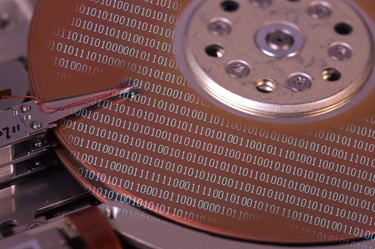
Transferring multiple files at once isn't particularly bad for a hard drive, it's just not an ideal working situation for platter-based hard drives. Transferring multiple files at the same time isn't constant enough of a process to cause substantial damage to the hard drive. Also, transferring multiple files at the same time does not damage solid state drives in any way: The problems are only with physical disk drives.
More Seeking on Platter Drives
Video of the Day
Platter-based hard drives are a physical medium and have a disk reader head that has to move and make contact with the disk storage platter to read and write files. This physical movement is a normal function of the device; however, it takes a few milliseconds to adjust itself. This time can add up and increase the total time it takes to transfer all the files when moving more than one at once. If you batch copy and paste a set of files, the computer will move them one at a time.
Video of the Day
Hard Drive Wear
The optimal method is to run a sequence of file transfers through a single copy window as opposed to running several copy windows at once. If you're running more than one batch of transfers, the hard drive has to jump back and forth between the two, which causes more wear and tear on the drive. According to the 2007 study Failure Trends in a Large Disk Drive Population, the more heavily you use a hard drive, the greater the odds are that it will fail.
Not Constant Enough to Cause Damage
Transferring multiple files at once is a relatively brief process compared to the constant hard drive use caused by a known hard drive destroyer called disk thrashing. Disk trashing is when the computer is constantly moving data back and forth between the system memory and the hard drive's virtual memory. Disk thrashing causes hard drive overuse that can physically damage the drive and it is caused by the computer having insufficient memory. Transferring multiple files at the same time is comparable to a light, brief version of disk thrashing. While transferring multiple files at once causes the hard drive to do more seeking work, it is not a long-term, constant process. Any wear caused by multiple file transfers won't have a large impact over the life of the hard drive.
Windows 8 Improvements
Windows 8 makes a few improvements to the file copying process previously only found in third-party copy management programs that improve multiple file transfers. Instead of running two separate transfers, Windows 8 organizes all active transfers into a single manager program. It can sequence the transfers so only one is going at a time. However, you still can run multiple transfers at the same time through multiple programs at once.
- Eduardo Pinheiro, Wolf-Dietrich Weber and Luiz Andre Barroso for Google Inc.: Failure Trends in a Large Disk Drive Population
- PC Magazine: Definition of: Seek Time
- Computer Hope: Thrashing
- Microsoft: Improving Our File Management Basics: Copy, Move, Rename, and Delete
- PC World: How to Use Windows 8's Cool New File-Copy Feature